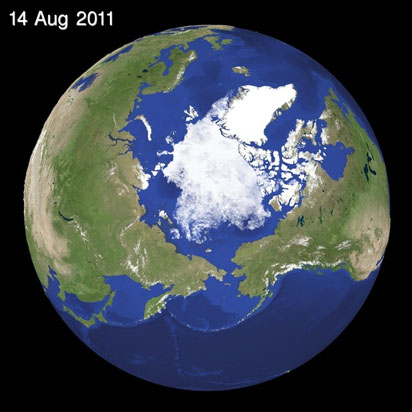2011.08.16
2011 GIC Weekly Report Vol.2
Northeastern Passage Stays Open
Topics of the Week
The northeastern passage continues to stay open this week. This summer, the biggest cause for the earliest opening in history is the quickly receding ice in the Laptev Sea. Figure 1 is a satellite image showing the latest conditions around the Vilkitsky Strait, compared with the same period last year. The red areas in Figure 1 represent sea ice. Last year, we could see ice spreading on the east side of the strait (western Laptev Sea), but this year there is already no ice. Currently, we think it is not likely that the water will get colder and freeze again in the Vilkitsky Straight. Even along the northwest passage, ice continues to melt. There is a good chance that this passage will also be open soon.
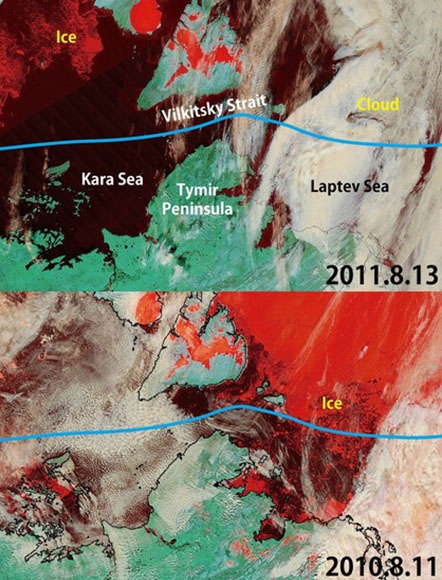
Fig. 1: MODIS Terra satellite image of sea ice around the Vilkitsky Strait on 13 August 2011 and 11 August 2010.
Sea Ice Extent
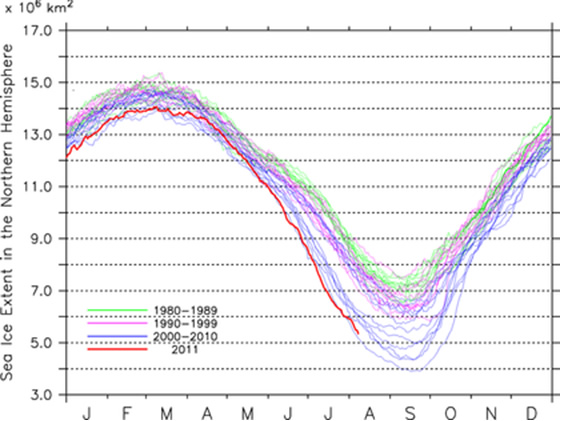
|
Arctic Western Arctic Eastern Arctic |
Fig. 2: Surface Area of Ice Coverage in the Arctic Sea(Click to expand)
Figure 2 shows the ice extent in the Arctic Sea. Currently, the entire Arctic Sea is covered by only 5 million . This is the smallest area observed since 4.8 million in 2007. There is currently still a trend toward sea ice receding. Sea ice has receded 300,000 in the last week. Looking at the ice extent in the Western Hemisphere (Figure2.b) and Eastern Hemisphere (Figure2.c), the receding ice in the Eastern Hemisphere stands out, while there is almost no change in the Western Hemisphere. Figure3 shows the current sea ice distribution. Progressive melting can be seen in the East Siberian Sea and Laptev Sea in the Eastern Hemisphere. Meanwhile, multiyear ice is breaking up in the Canadian Arctic Archipelago in the Western Hemisphere.
Sea Ice Conditions along Polar Routes
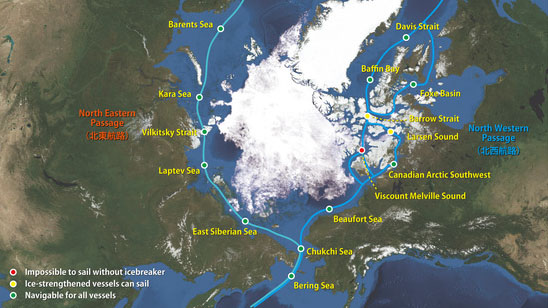
Fig. 4: Sea Ice Conditions along Northeastern/Northwestern passsages
Figure 4 shows the possibility of transiting the northeastern passage on the Siberian side and northwestern passages on the Canadian side. The northeastern passage is open continuously, and there is a high likelihood that the northwestern passage will open, too. Changes this week were determined using satellite imagery. The northeastern passage continues to stay open from last week with ice melting in the East Siberian Sea and Vilkitsky Strait. Melting also continues along southern route of the northwest passage, and the sea ice concentration of Larsen Sound has reduced to one-tenth of the level in winter. This means that the Amundsen Bay Larsen Sound Barrow Strait route will become open very soon. Although ice along the northern route in Viscount Melville Sound continues to melt, still only ice-breakers can transit. This means that the route has still not reached its open state.
I-SEE Model Predictions
Figure 5 shows the output from the I-SEE Engine prediction model developed by Weathernews. It shows sea-ice progressively receding through the second half of August. Recession of the ice that normally extends off the coast of the East Siberian Sea means the route should grow even wider. Also, there is no more sea ice in the Vilkitsky Strait, but there is still some remaining on the northern coast of Severnaya Zemlya. Along the northwestern passage, sea ice in the Larsen Sound and Barrow Strait is expected to melt progressively, possibly opening in the latter half of August.
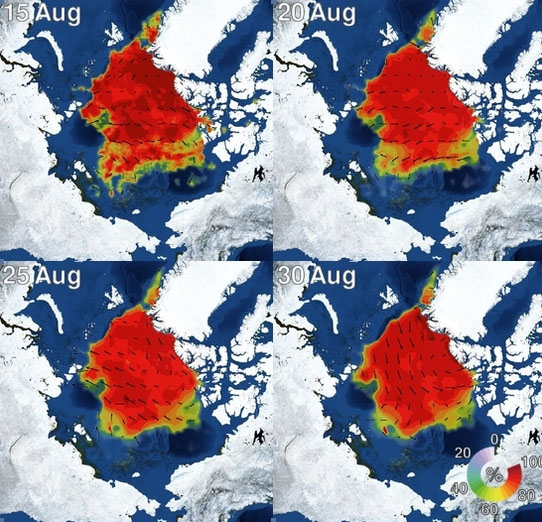
Fig 5: Sea Ice Prediction for the Arctic based on model data


